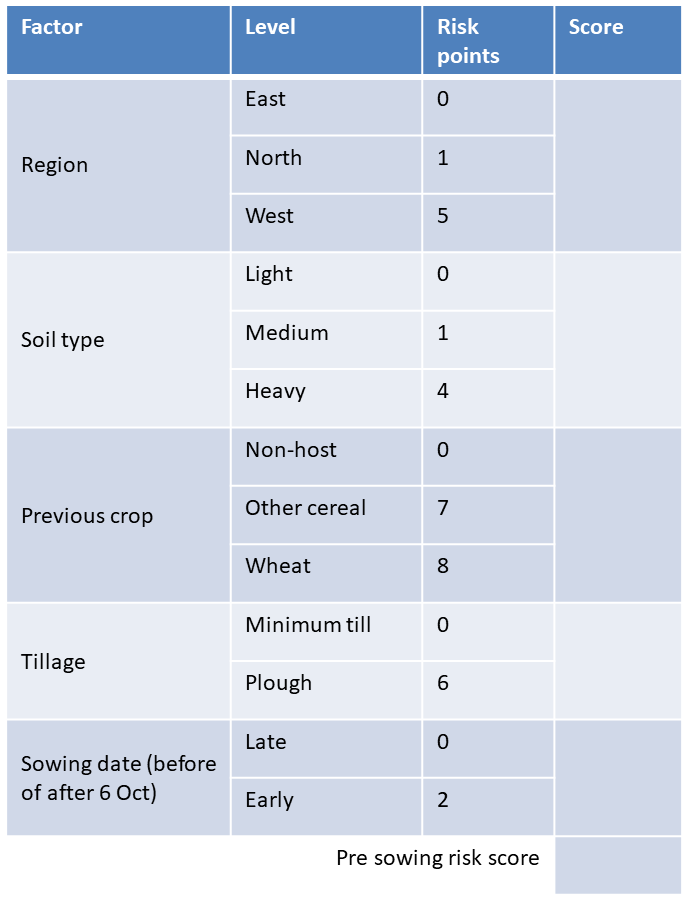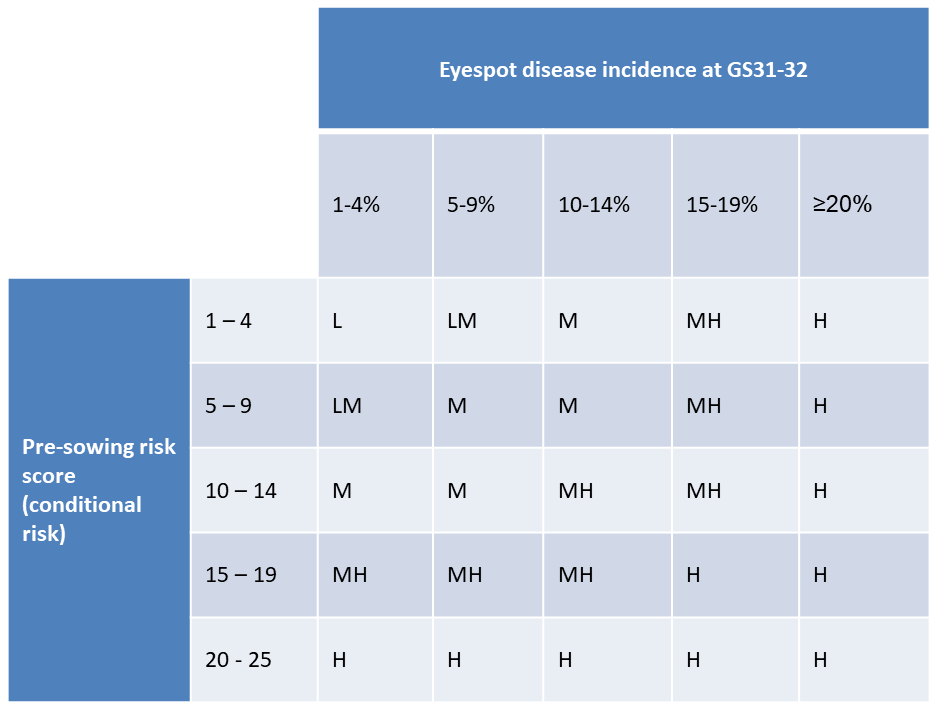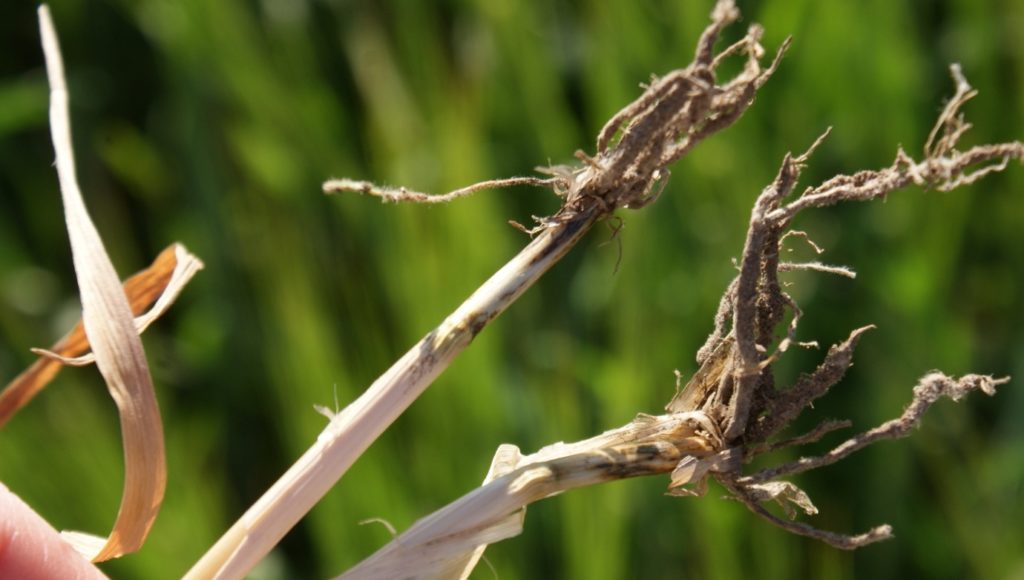Wheat Diseases: Eyespot – April 2020
9 April 2020Eyespot risk
A mild winter suits eyespot so the risk is potentially greater this year. Sow date is actually quite a small influence, so the proportion of late drilled crop only reduces the risk slightly. Base your need to treat on your previous experience of the disease, and on the risk assessment which is shown below. Wetter sites with a high preponderance of cereals in the rotation are at greater risk. Where the risk is high there is an additional rationale for using an SDHI at the T1 timing.
Calculate the pre-sowing risk score
2. Assess eyespot disease in spring
Assess eyespot incidence in the field at GS31-32, as the % of stems showing visible eyespot symptoms on plants collected at random.
You can see from this table that if you are already up at 20 points or more before you do the field assessment then it doesn’t change your risk if you find a lot or a little in the field, so you could plan treatments for these fields now and then look at the low or moderate risk fields again at T1.
3. Take action based on the final eyespot risk
Prioritise treatment to those crops that score highest.
Sign up to the FAS newsletter
Receive updates on news, events and publications from Scotland’s Farm Advisory Service




